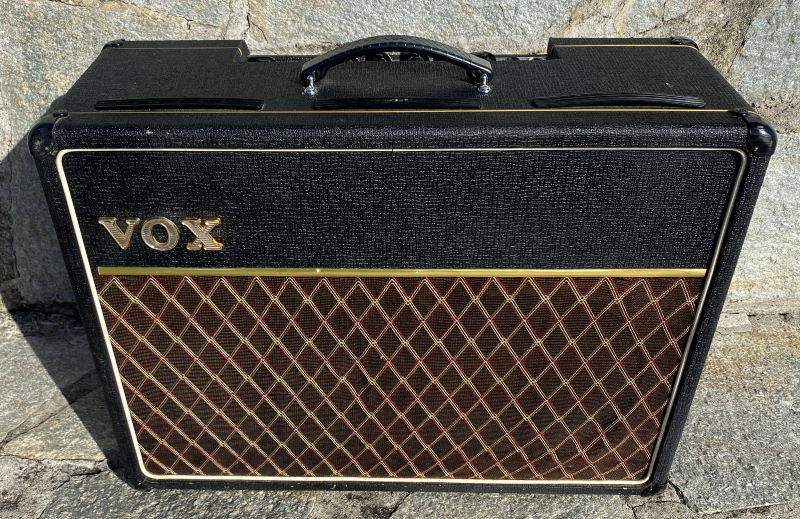

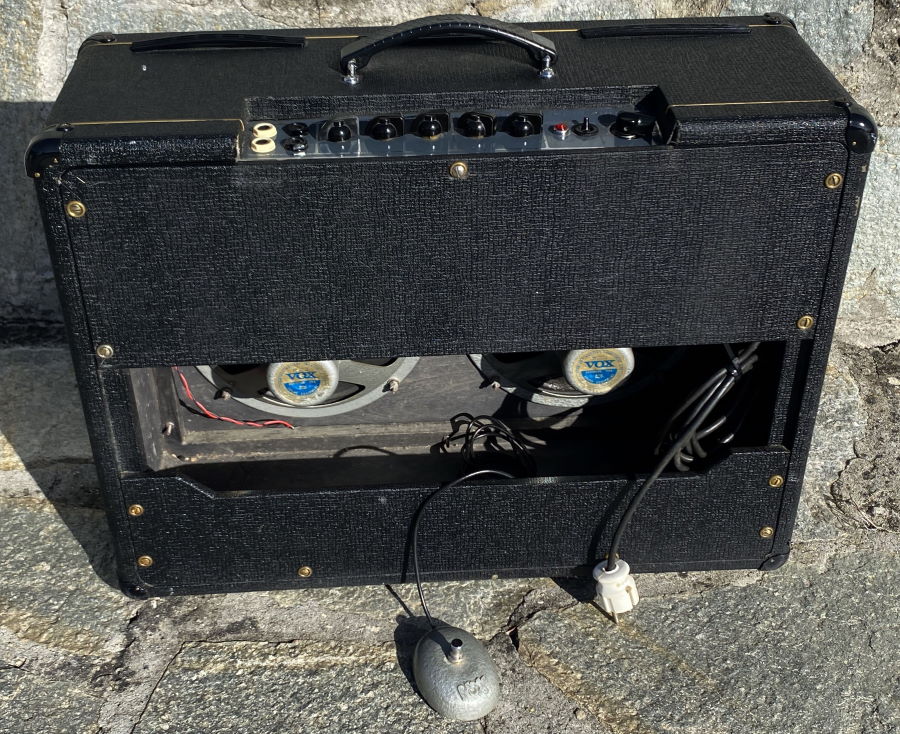
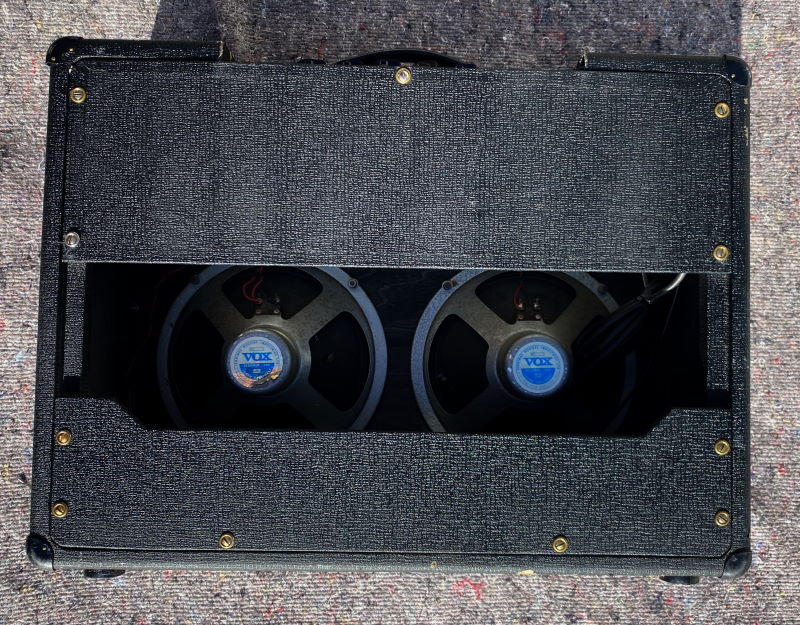
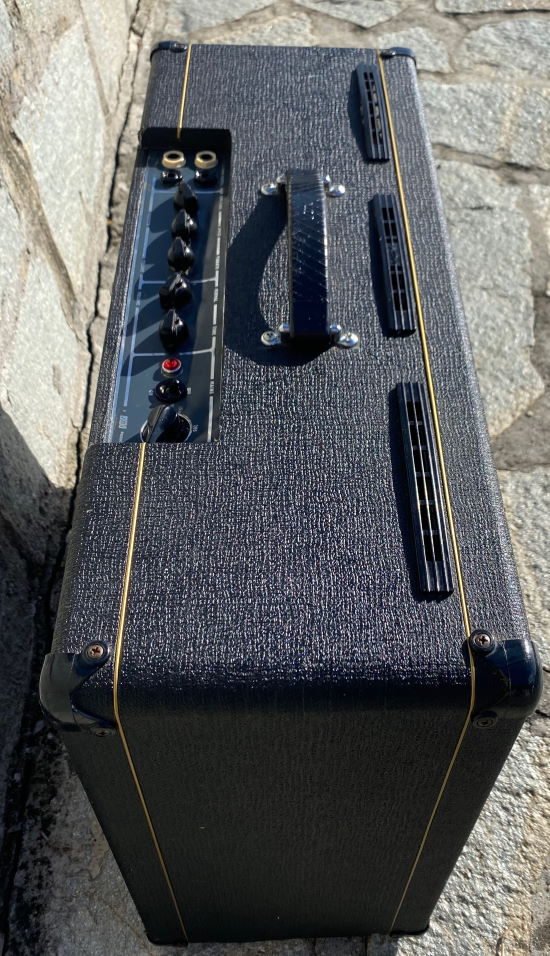
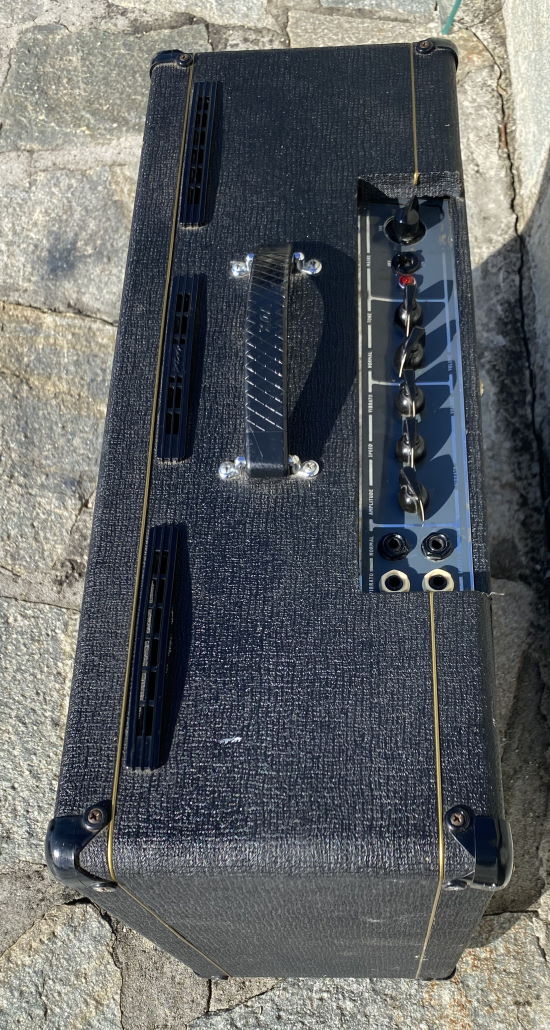
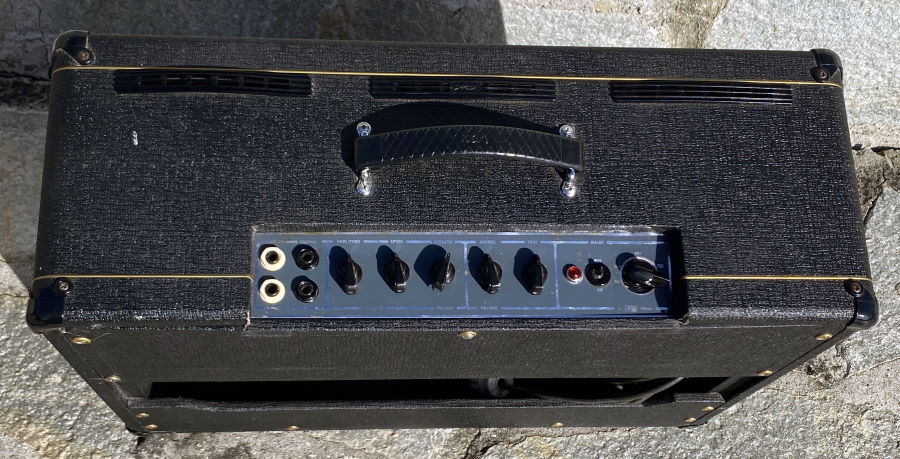

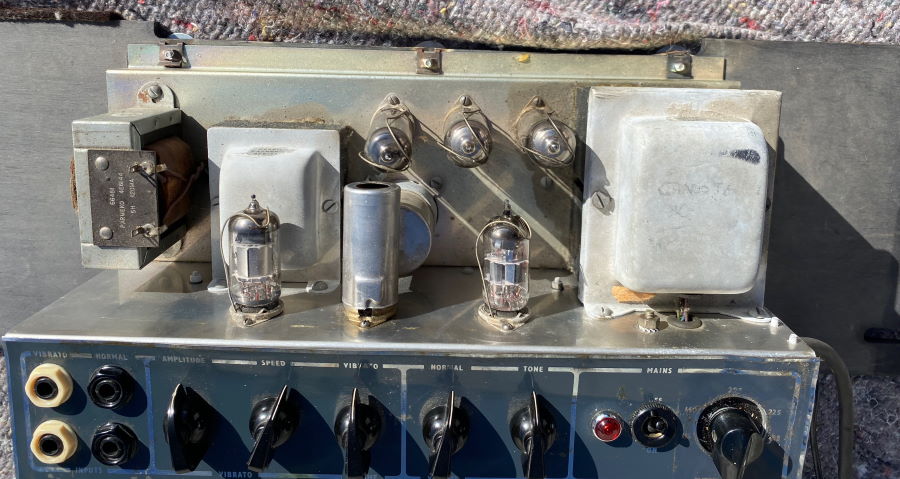

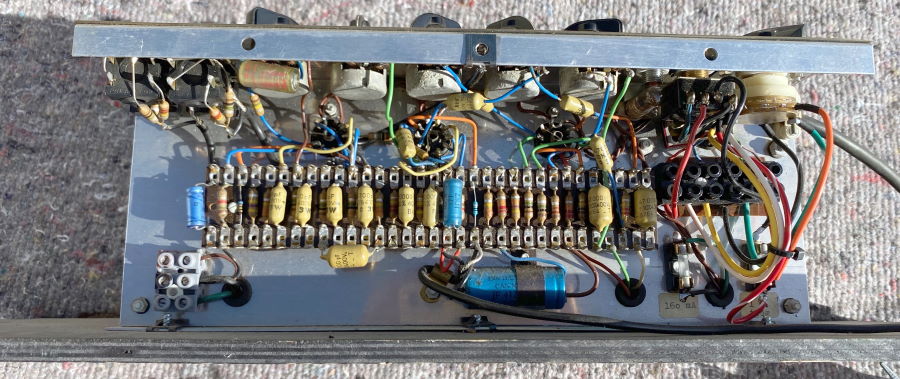
1965 VOX AC10 Twin Amp has been professionally serviced so is in perfect working conditions, comes with tremolo footswitch, all original The holy grail of 1960s guitar amps - acknowledged as the best-sounding model vintage JMI-era Vox ever made.
TUBES:1x EF86, 1x ECF82, 1x ECC83, 2x EL84, 1x EZ81 ParmekoTransformers with voltage selector. Speakers: 2x 10′ Elac Weight: 18kg Dimensions: 63x47x23cm
By 1961, Jennings Musical Industries had laid the foundations
for a complete Vox amplifier line. JMI introduced the 4 watt AC-2 (later known
as the AC-4) as an entry level amp. Next came the 10 watt, single 10" speaker
AC-10, marketed by Vox to "the smaller group." The 17 watt, single 12" speaker
AC-15 met the needs of the club musician. The 34 watt, dual 12" speaker AC-30
Twin was perched at the top of the Vox line.
After the basic amp line was in place, Vox created a few new models from
existing components. Vox introduced a dual 12" AC-15 in 1962 by modifying an
AC-30 Twin cabinet to accept an AC-15 chassis. The AC-15 Twin was priced between
the 1x12" AC-15 and the AC-30 Twin.
JMI also added a second 10" speaker to the AC-10 in 1962 and created the AC-10
Twin. The addition of a second speaker in the AC-10 Twin helped to bridge the
gap in the Vox line between the single speaker AC-10 and the AC-15. The AC-10
"Super Reverb Twin," a separate AC-10 head with reverb, tremolo and a matching
2x10 speaker cabinet became available in 1963
The circuitry for the Vox AC-10 was designed by Dick Denney
and was published on Jennings service schematic OS/008, "AC/10 Amplifier No. 3,"
dated September 9, 1960. The schematic was updated in September 1964 when 120
and 160 VAC mains voltage taps were added to the power transformer for export
models.
The AC-10 had a Vibrato and a Normal channel, each with two inputs and a volume
control. A single tone control rolled off the treble response in both channels.
Vibrato was a bit of a misnomer as the AC-10 actually had tremolo, not vibrato.
The Vibrato channel had "Speed" and "Amplitude" (depth) controls. A remote "egg
pedal" foot switch actuated the tremolo effect.
Early models included a plug style mains voltage selector, later models used a
rotary switch for mains voltage selection.
The tube complement included one EF86, one ECF82, one ECC83, two EL84 and one
EZ81.
The AC-10 Twin had the look of a slightly downsized version of the AC-30 Twin.
Even though the AC-10 Twin was only produced for a few years, the cabinet went
through a number of revisions. The earliest version of the AC-10 Twin was
produced in 1962. As it was constructed primarily of 3/8" baltic birch plywood,
it earned the name of the "thin edge AC-10 Twin." The front and side edges of
the cabinet were radiused, but the rear edges were square. The earliest AC-10
Twins were covered in fawn rexine vinyl. After Vox phased out fawn vinyl in
1963, the smooth black vinyl that covered the Vox Continenal organ was used on
the AC-10 Twin. The amp had a large Vox logo, brown Vox grill, a hinged plastic
"suitcase" style handle and brass vents.
The next version of the AC-10 Twin cabinet was produced in late 1963. It also
featured the "thin edge" cabinet. It was similar in most ways to the original "thin
edge" AC-10 Twin enclosure. The only significant change was the replacement of
the luggage style swivel handle with a Vox logo handle.
The next generation AC-10 Twin cabinet was produced in mid 1964 and shown on the
amp at the top of this page. It had a "thin edge" cabinet with rounded rear
edges. It was covered in black pebbled vinyl. The logo, handle and grill
remained unchanged but the brass vents were replaced with a new molded vent with
a Vox logo.
The final version of the AC-10 Twin cabinet was produced in late 1964. Known as
the "thick edge" AC-10 Twin cabinet, the top, bottom, sides and baffle were made
from 3/4"
JMI Vox catalogs from the sixties indicated that the AC-10
Twin amp was equipped with "two special 10 inch loudspeakers." This lack of
specific speaker information left the door open for whatever "special" speaker
might be chosen by Vox for future AC-10 Twin production.
Vox equipped the 1963 AC-10 Twin shown on this page with a pair of 10" Elac
speakers. The 1964 AC-10 Twin also shown on this page used two Goodmans "Power
Range" 10" speakers. The frames of both the Elac and Goodmans speakers were
painted in the traditional blue color.
The 1965 AC-10 Twin, utilized yet another type of 10" speaker. This AC-10 Twin
included the same ferrite magnet Elac 10" speaker that Vox included in many of
their LS40 PA cabimets. These speakers were finished in silver gray paint and
included a gold JMI Vox sticker on the magnet cover.